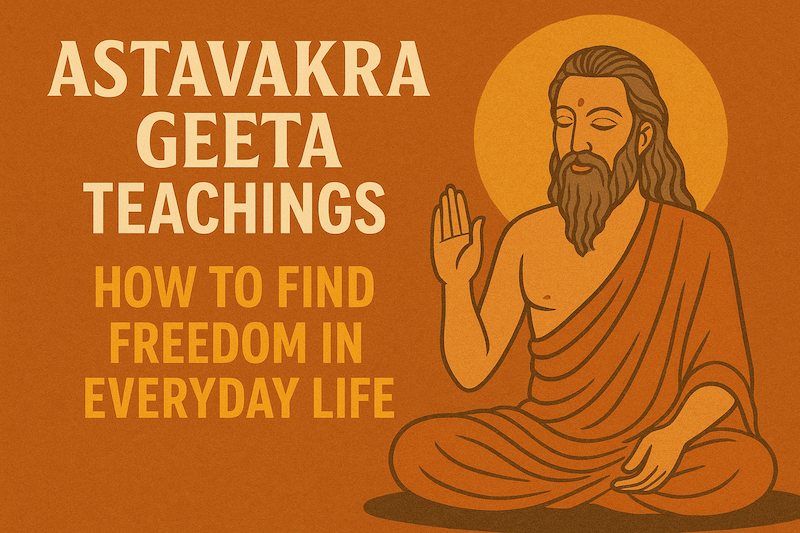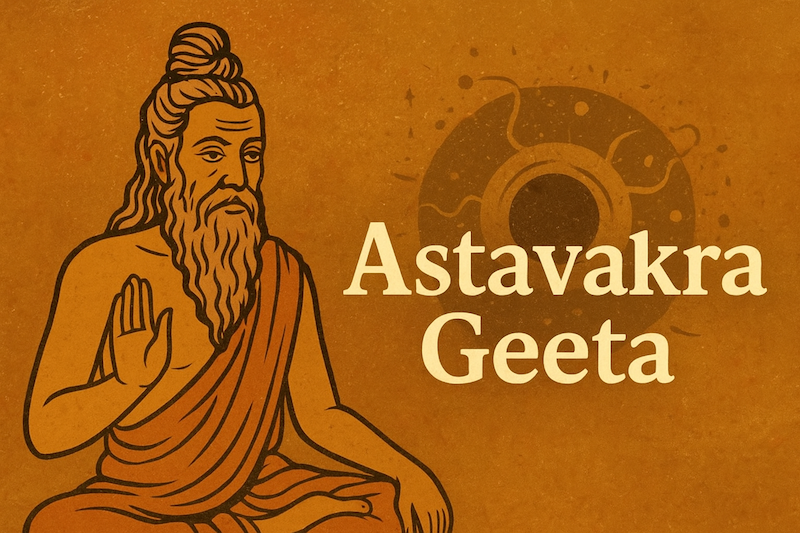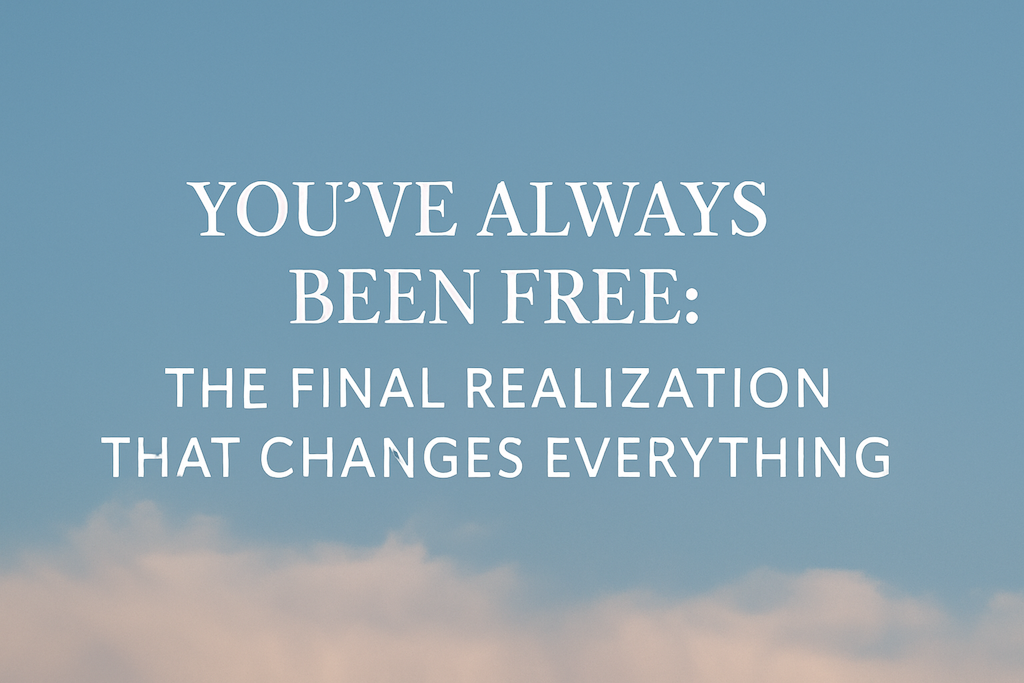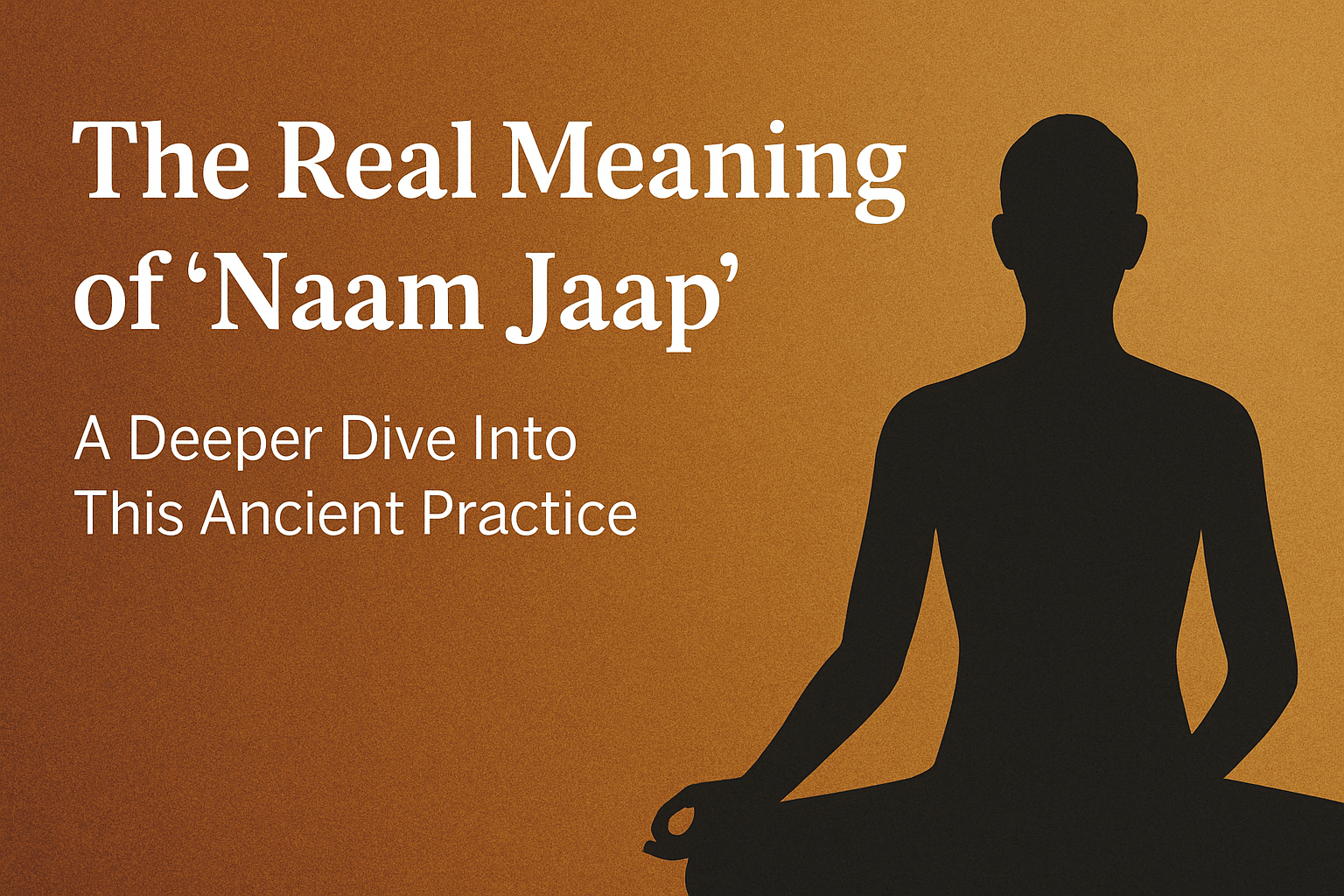Introduction
In the first part of our series, we explored the origin and background of the Astavakra Geeta, a powerful dialogue between Sage Astavakra and King Janaka. Now, let us go deeper into the core teachings that make this scripture stand out.
Unlike many philosophical texts, the Astavakra Geeta doesn’t waste time in rituals or gradual paths. Its focus is sharp and direct: You are pure awareness, already free. The only bondage is in believing you are bound.
Teaching 1: You Are Pure Awareness
At the heart of the Astavakra Geeta is the declaration:
“You are not the body, you are not the mind. You are pure consciousness.”
This means our true identity is beyond physical form, beyond thoughts, and beyond emotions. When we stop identifying with these temporary aspects, we realize we were never limited in the first place.
Modern Application:
In everyday life, this teaching encourages us not to be overwhelmed by stress, roles, or labels. For example, you may be a parent, a professional, or a student, but beneath all roles lies your deeper Self—calm, unchanging, and free.
Teaching 2: Detachment from the Unreal
Astavakra emphasizes detachment—not as rejection of life, but as clarity in seeing what is real and what is temporary.
The body ages, wealth comes and goes, and relationships change. But the Self, or pure awareness, remains untouched. By realizing this, one can live fully without being enslaved by fear, desire, or loss.
Modern Application:
When faced with success or failure, remind yourself: “This too shall pass.” This perspective reduces anxiety and helps cultivate inner balance.
Teaching 3: Silence Is the Highest Practice
Unlike scriptures that encourage complex rituals or meditations, Astavakra simply points to silence and awareness. True wisdom arises not from effort, but from resting in your natural state.
Modern Application:
Even a few moments of silent reflection during a busy day can reconnect you with your inner stillness. Instead of constantly chasing distractions, pausing to just “be” is a practice in itself.
Teaching 4: Freedom Is Instant
The most radical teaching of the Astavakra Geeta is this: Liberation is not a future goal—it is available right now. The moment you drop false identification and rest in awareness, you are free.
Modern Application:
Instead of thinking “I’ll be happy when I achieve this or that,” you can experience contentment in the present moment. Freedom is not at the end of a long path—it’s here, if we stop searching outside ourselves.
Why These Teachings Matter Today
In a world dominated by overthinking, endless desires, and identity struggles, the Astavakra Geeta provides clarity. It doesn’t demand withdrawal from life but asks us to live with awareness and detachment. By applying its wisdom, we can navigate challenges with peace and inner strength.
Final Thoughts
The Astavakra Geeta is not just for monks or philosophers—it is for anyone seeking inner freedom in daily life. Its message is bold yet beautifully simple: You are already free; realize it now.
In the next post of our series, we’ll explore how the Astavakra Geeta compares with other spiritual texts like the Bhagavad Gita and Upanishads, and why its direct approach makes it unique.



